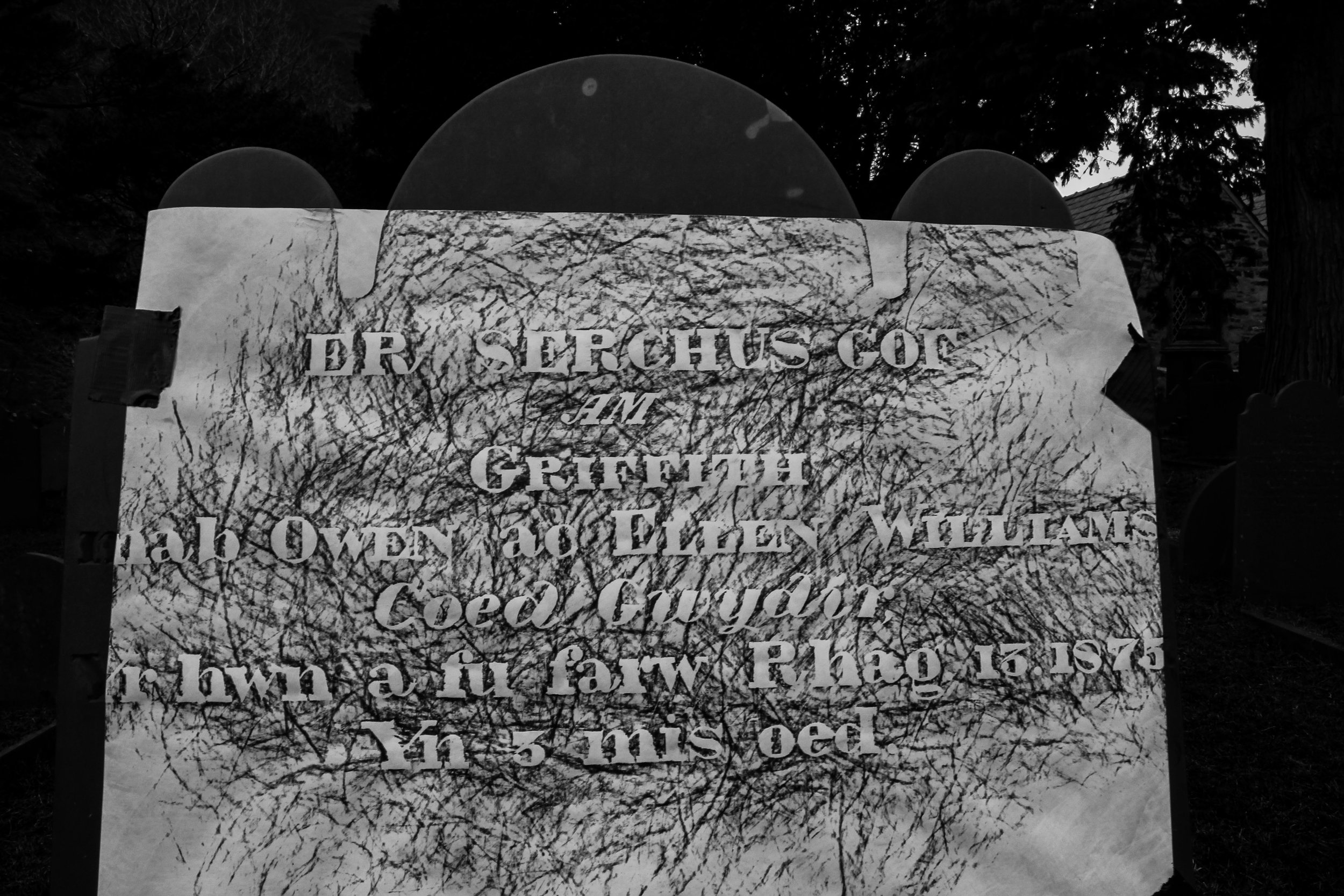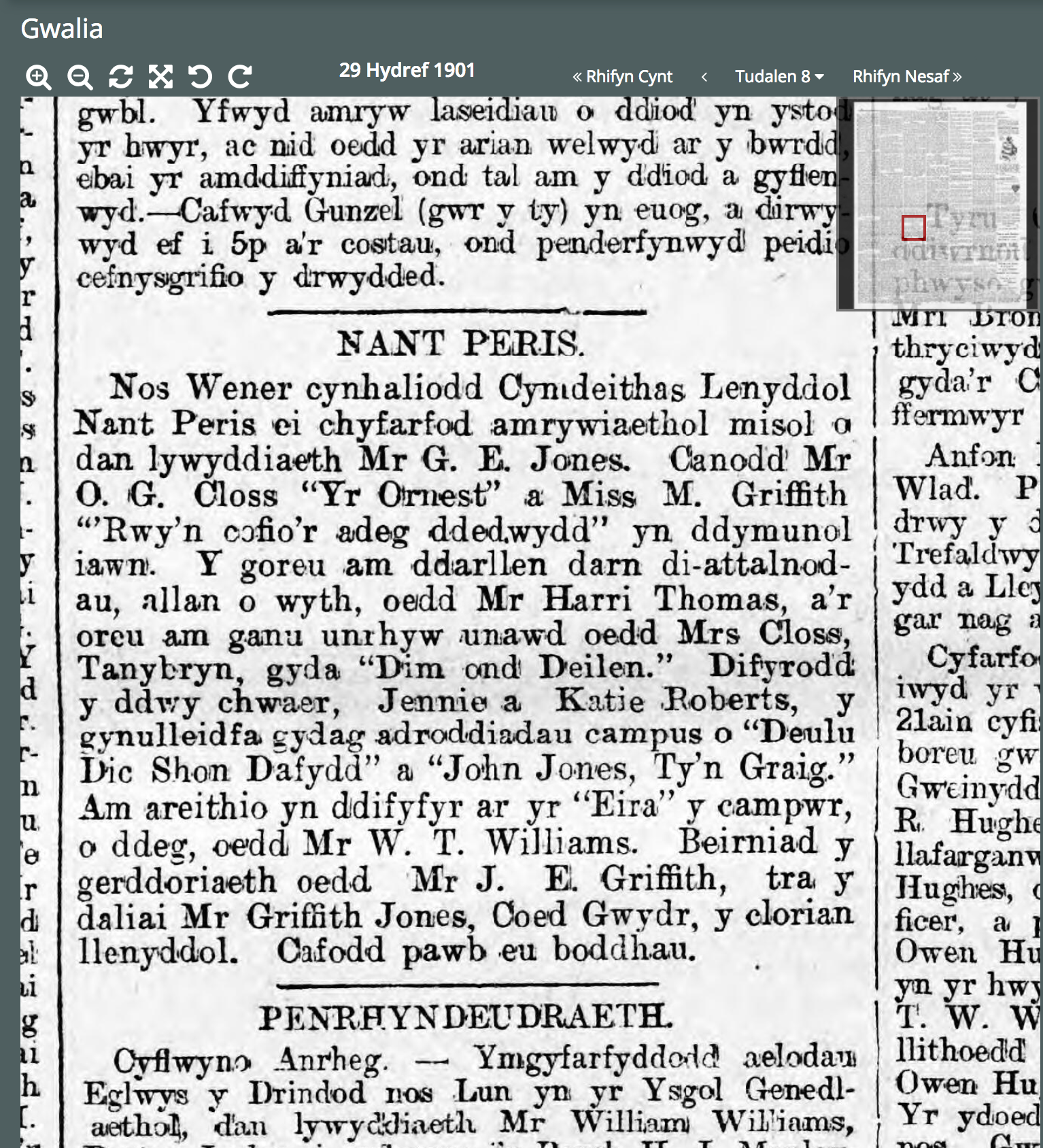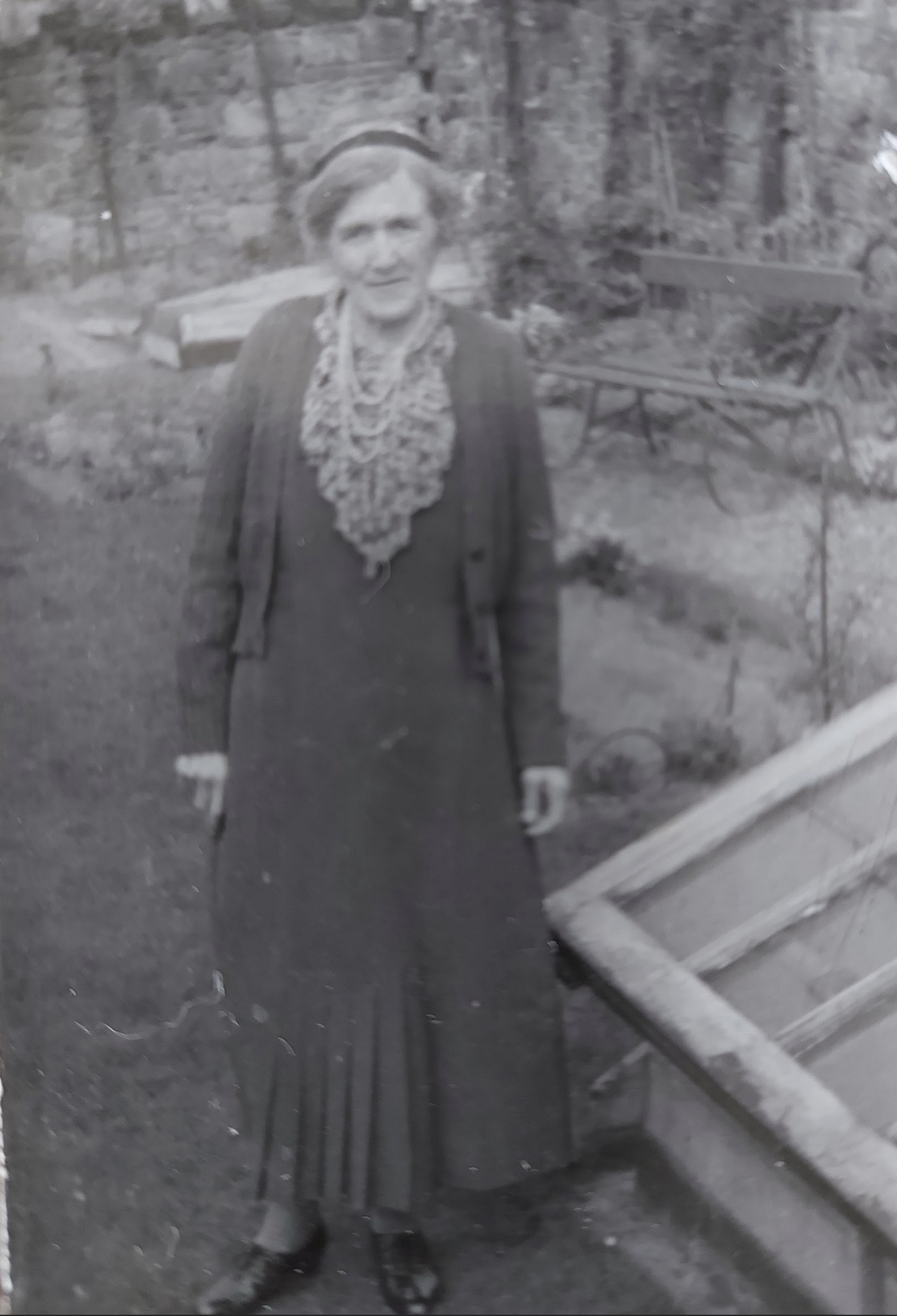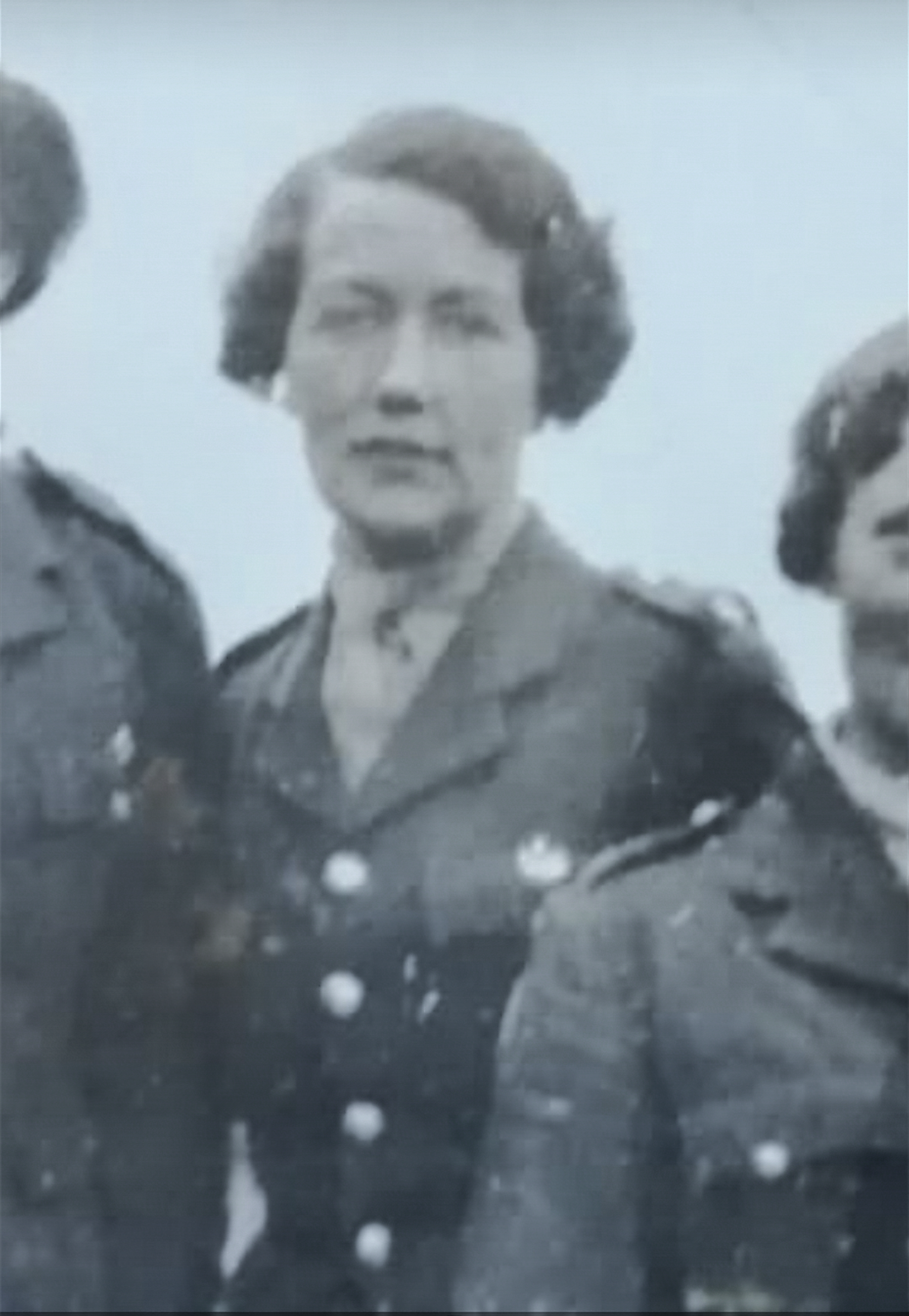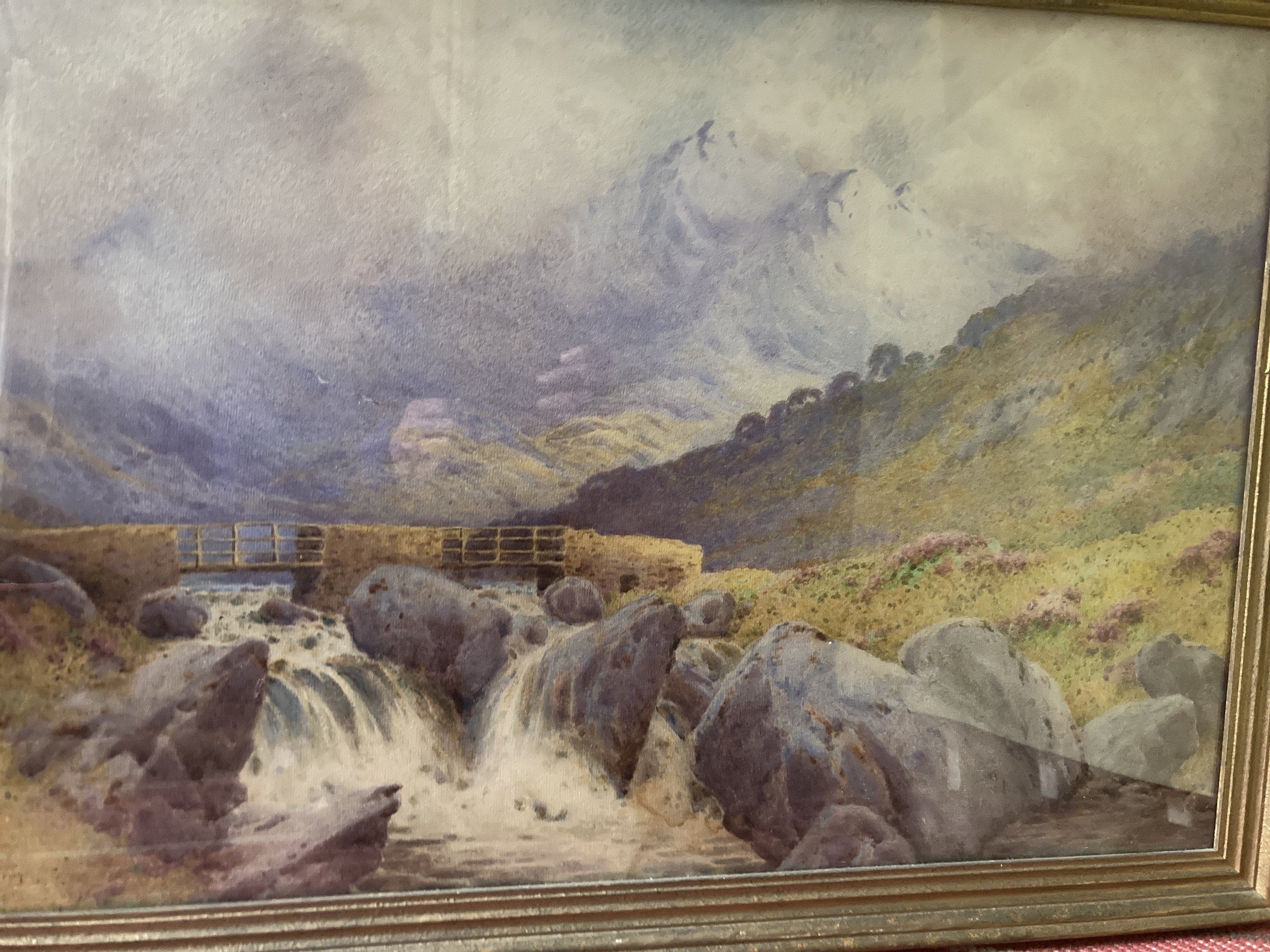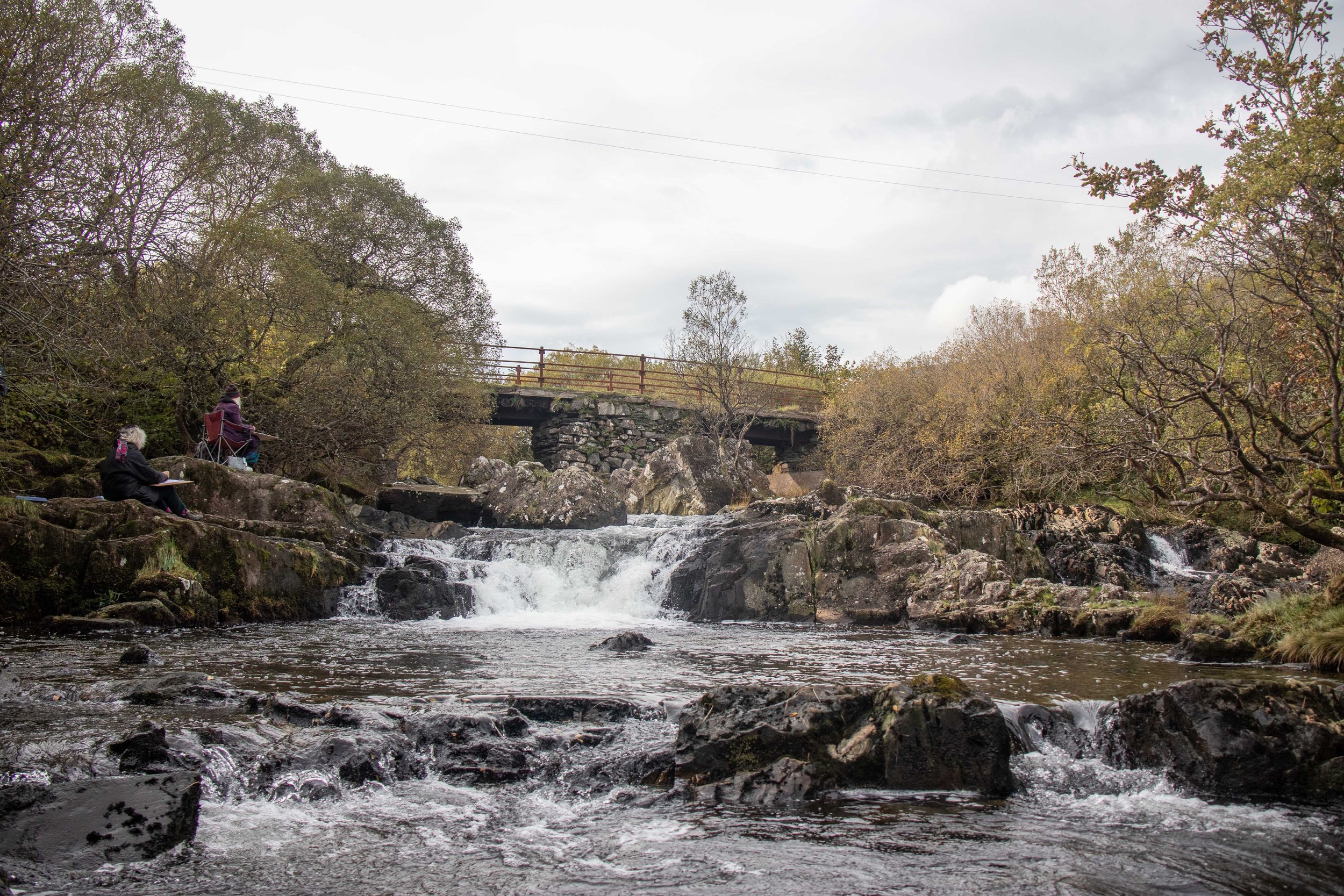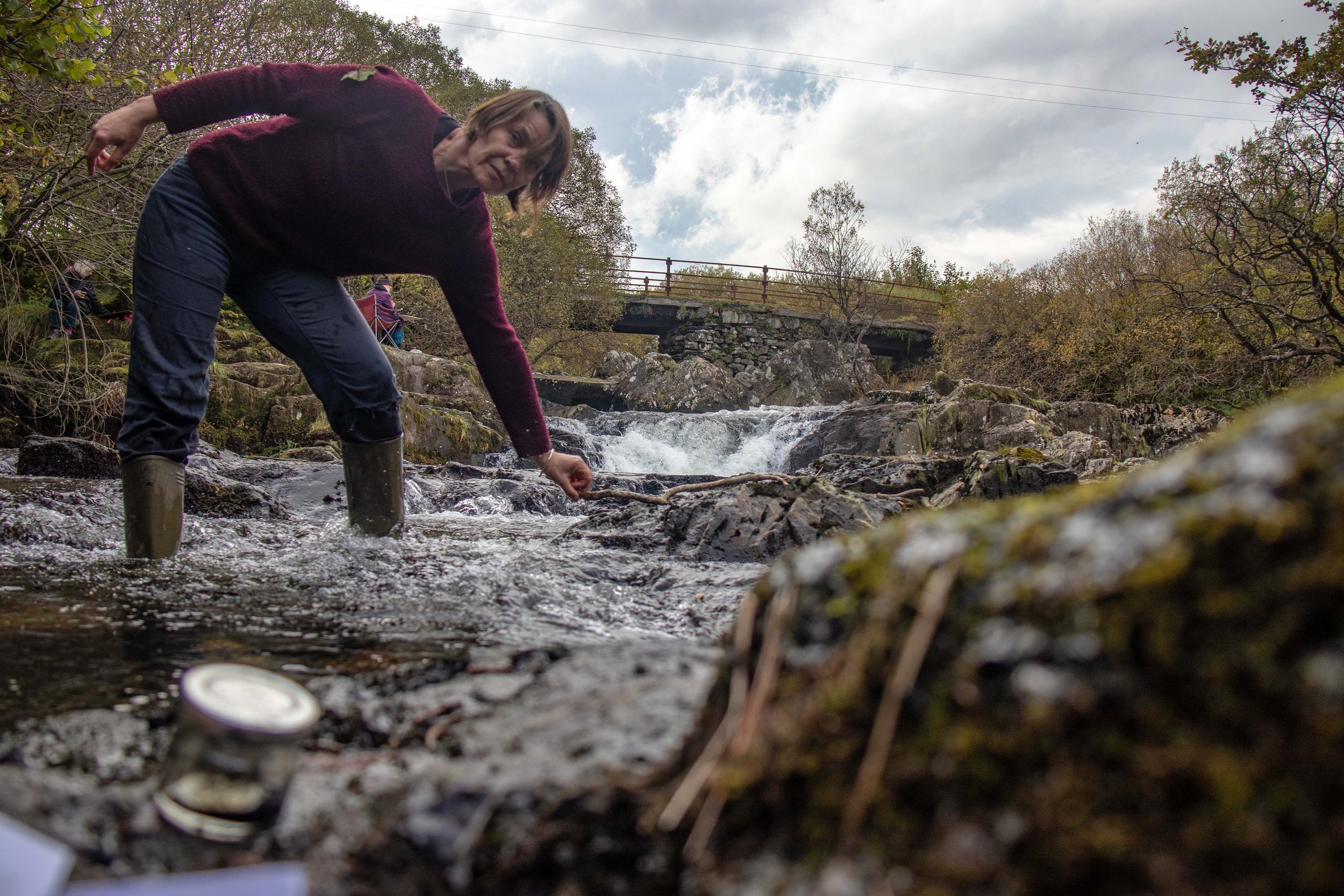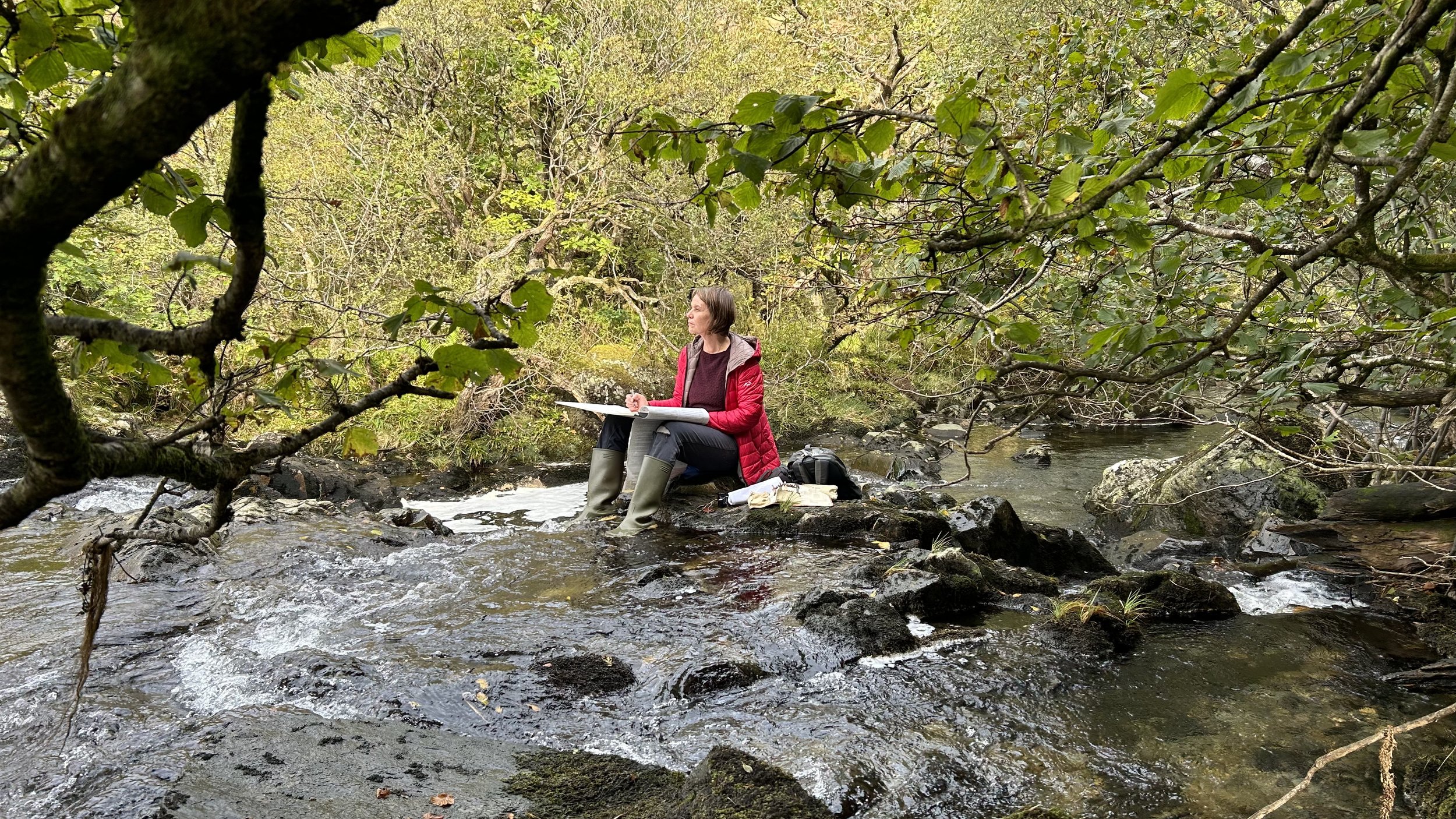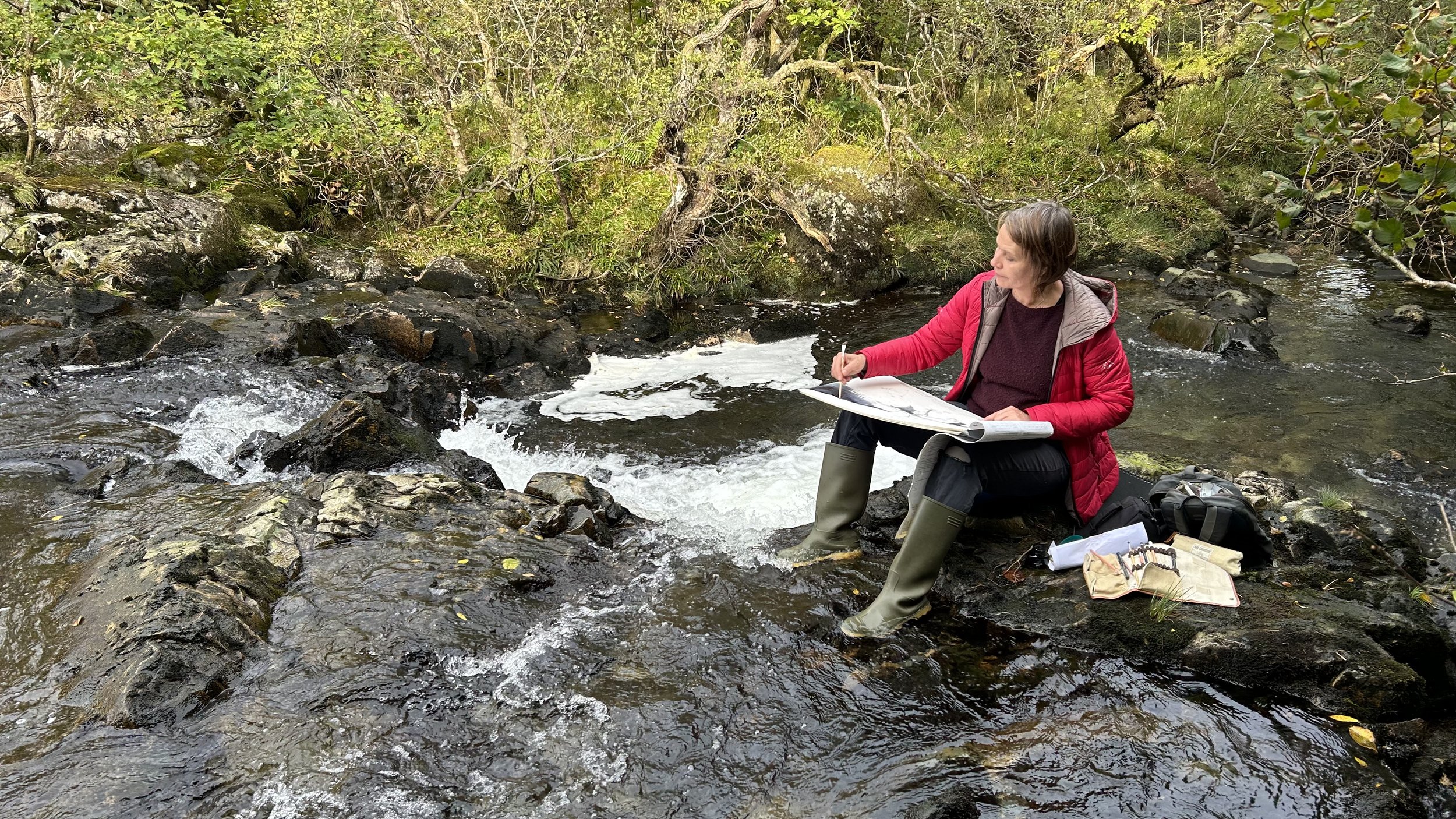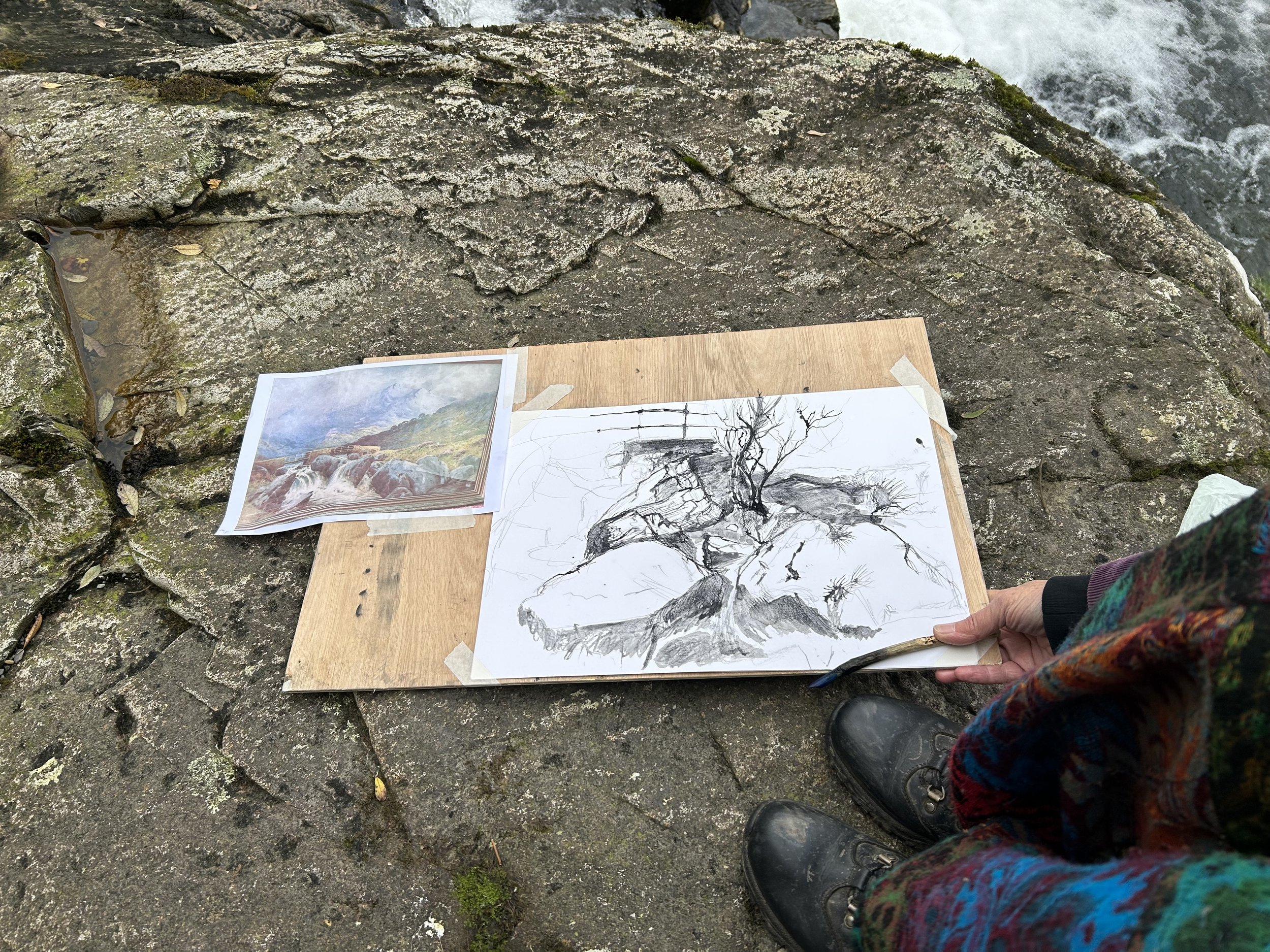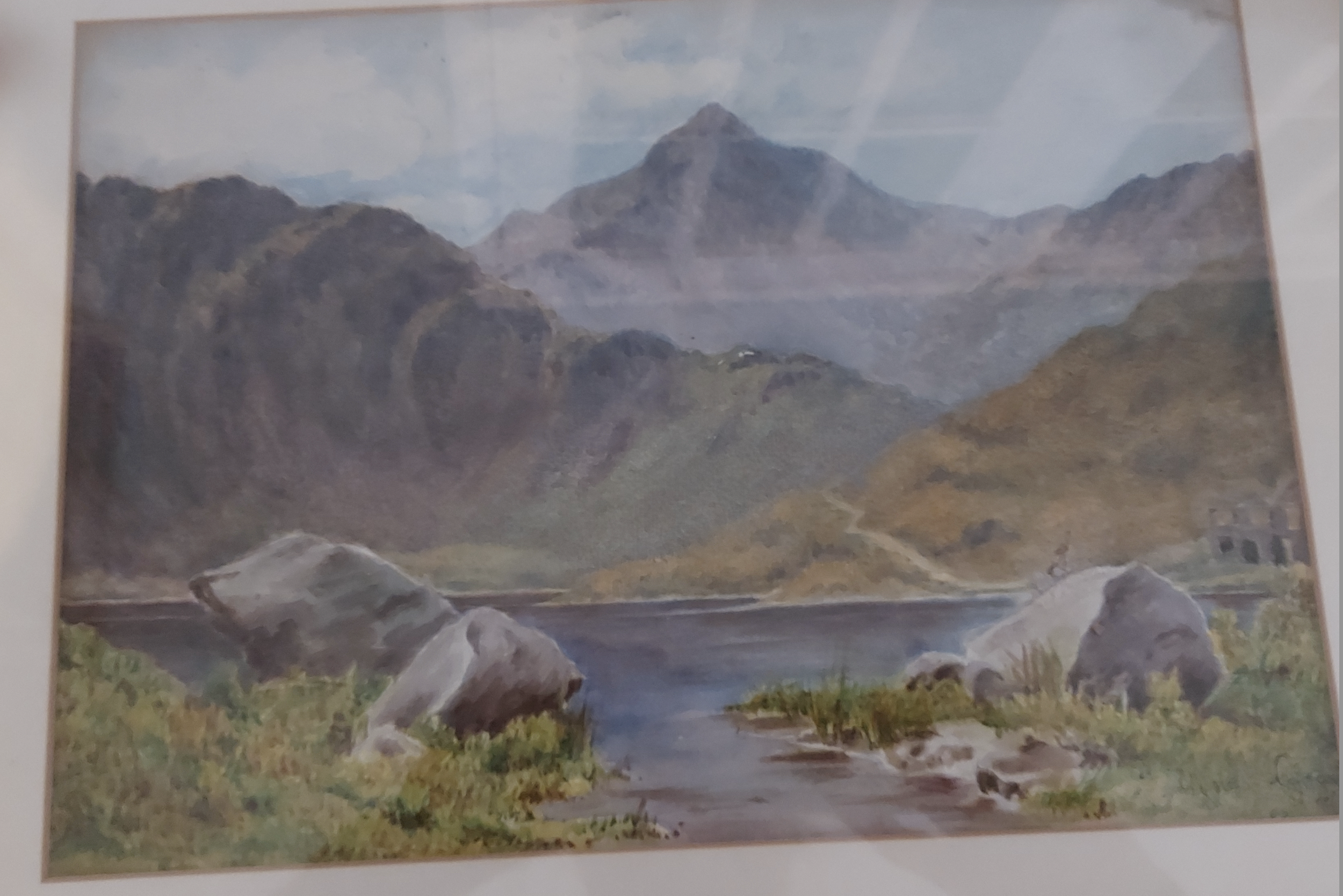Ellen Williams & the Women of Coed Gwydr
Nantperis, 1873 - 2024
Hefyd...
This is a story of life (and death) in a quarry household over time, of the way in which the lives of women were 'hidden', of the gradual change from Welsh to English language, of the longevity and continuity of the household through the women (and through a connection with land, literature and art), and the interconnectedness of lives between past and present households in Nantperis.
The story is from Coed Gwydr, the house where I now live, and through researching it (initially inspired by digging the 'treasure' from the old middens in the backgarden), I feel like I've created myself a house genealogy. As Shannon Lee Dawdy says in her wonderful book Patina (with some apology to Lévi Strauss):
“genealogy created more by habitation than blood. This genealogy can gradually integrate willing newcomers but not the short-term, ill-informed visitor.”
This is me. This is my family. And as you see, it comes to life…
"Yma ywf finna i fod"
Coed Gwydr is the house above the hat of the right hand Welsh Lady
1. Teulu Williams 1873 - 1895
IN LOVING MEMORY OF OWEN GRIFFITH son and ELLEN WILLIAMS Coed Gwydir Who died Dec. 13, 1875, 3 months old
In the 1870s, Ellen was the first woman to live at Coed Gwydr, Nantperis. Here she lived with her husband, Owen Williams, her father in law, Griffith Williams and her brother in Law, Robert Williams.
Owen, Griffith and Robert worked in Chwarel Dinorwig. They built Coed Gwydr, facing dead south, from stone extracted from a small quarry in the garden. Griffith was in his 60s, and Ellen and his sons in their 20s. Although they built the house, Coed Gwydr was owned by the Vaynol Estate, the owners of the Dinorwig Quarry.
Within a couple of years of moving to Coed Gwydr (in around 1873), Ellen gave birth to a son, Griffith, who died at 3 months on 13th December 1875.
Their second son, Humphrey was born 18 months later in 1877.
Just 18 months after that, Ellen’s husband, Owen died aged 32, on 18 December 1878, while she is pregnant with their third son, John.
Er serchog cof am OWEN G WILLIAMS. Coed Gwydr, Nant uchaf Llanberis. Yr hwn'n fu farw trwy gyfarfod ddamwain yn Chwarel Dinorwig dydd mercher Rhagfyr 18, 1878 Yn 32 mlwydd oedd. In loving memory of OWEN G WILLIAMS. Coed Gwydr, Nant uchaf Llanberis who died by meeting an accident in the Dinorwig Quarry wednesday December 18, 1878 At 32 years of age.
Owen’s gravestone is made of limestone, because he died in a quarry accident. The stone is so worn away that it is hard to read the writing: the words were only revealed as they imprinted on the paper.
The long inscription on his gravestone also includes an Englyn, perhaps composed by Ellen? Or his family/co-workers in the quarry:
O'r cor chwarelwyr cywrain - collwyd dyn call a doeth i' gelain, myned ymaith mewn damwain O'n rhwysg mae amryw o rhain. A smart and wise man of the talented quarryman’s choir - sent from here in an accident, one of several of those lost to us.
Owen was very respected in Nantperis: he was mentioned in 'Fy Atgofion' by Mrs Mary Davies, Y Llythyrdy (which is full of little stories of notable characters in Nant) thanks to Gwilym Roberts, Cerrig Drudion, for showing the book):
"OWEN WILLIAMS, Coed y Gwydyr. Yr oedd ganddo ddawn siarad lli'r afon. Yr oedd yn un da am gadw rheolaeth arnom, ac am ennill ein meddwl a'n bryd ar y wers. Yr oedd yn weddïwr gwresog. Cyfarfu â'i ddiwedd yn y chwarel yn dair ar ddeg ar hugain oed."
ER SERCHOG COFFADWRIAETH AM ROBERT GRIFFITH WILLIAMS Coed Gwydr Llanberis YR HWN A FU FARW MAI 9FED 1879 YN 30 MLWYDD OEDD Gwyn eu byd y meirw y rhai sydd yn marw yn yr Arglwydd IN LOVING REMEMBRANCE OF ROBERT GRIFFITH WILLIAMS Coed Gwydr Llanberis WHO DIED MAY 9TH 1879, AT 30 YEARS OLD Blessed are the dead who die in the Lord
Now a widow, Ellen gave birth to John in 1879. And the same year, Ellen’s brother in law, Robert died at 30 years old, on 9th May. His gravestone is of purple slate, so he didn't die in the quarry....
... and it was only when Elin Tomos (who lives nearby at Ty'n'Twll) found stories in Papurau Newydd Arlein that we found his story:
It turns out that he basically just fell down in the garden, dead.
Elin Tomos also found details of his older brother Owen's death: it was a gruesome accident in the quarry, where he was blown 60 yards (from one level to another) after going back to check on explosive that hadn't gone off. The article below is written with a broken heart, ending with the author saying he is writing with tears in his eyes... and more poetry by Ieuan Peris, Pant-y-Fron:
Ellen Williams continued to live at Coed Gwydr, with her elderly father in law and her two sons. She was here for more than 20 years. The plates, gun (!) and metal farm animals and the circle-decorated slate and old fire place and maybe even the old beds that I have found in the garden middens are very likely to have been put there by Ellen.
I found out in the Nantperis graveyard that Ellen died at Coed Gwydr at 43, on 10th September 1895. I only discovered her name on the bottom of Owen’s gravestone while doing a rubbing of the inscription – I hadn’t seen it at all while trying to decipher the text from the stone itself. The inscription is just an add on ('Hefyd'), a note that she was Owen’s wife and the date and age of her death. No mention that she is a mother or loved or anything else about her. It suggests there was no-one left to write her a decent inscription, her sons being 17 and 15. It feels good to be re-remembering her now.
Did Ellen’s father in law Griffith survive her? I've not found Griffith’s grave, but he was already 84 in 1891. What happened to the two boys? One may have moved to Mynydd Llandegai....but there are also records of many from Nant moving to Pensylvannia, so perhaps that's why there is only a faint record of them?
The Williams' family graves: Griffith (jr), Owen, Ellen and Robert. All in a line in the South East corner of Nantperis Graveyard. Facing their home, Coed Gwydr (also known as Coed Gwydir, Coed y Gwydyr)
2. Teulu Jones 1895 - 1912
By 1901, the bilingual Jones’ family were living in Coed Gwydr. Just as in the Williams' family, the head of the household was also called Griffith (age 48, also a slate quarryman) and his wife was also called Ellen (51, listed as a lodging housekeeper).
I could find out only a tiny bit about them - Ellen is widowed by the 1911 census, and lived (at 62) with her daughter, Annie (33, listed in the census as 12 years married), and two children.
After a lot of searching around the graveyard, I found Griffith's grave: He died September 26, 1910: It says he'd come from 'Corporation Gallt y Foel, but I can't find anyone who knows what that might be.
But then Gwilym Roberts (who lives at Cerrig Drudion, in the centre of Nant, part of an 'age old' Nantperis family, and father of a good friend, Eifion), told me he'd seen something in an old article in the Caernarfon and Denbigh Herald about a suicide. And then, Elin Tomos found lots of stories of him - through online newspaper articles. It turns out that from a young age, Griffith was a successful marrow and pea grower (winning several prizes, although none were first prizes - this may have significance later), and had enjoyed literary success too: He performed a number of recitals and was the President of the Nant Peris Literary and Debating society in 1902. [By the by, this literary society was hosted by Mrs Elizabeth Closs, who put on feasts for the 38 members ... not exactly the 'silly, lazy, slovenly' quarryman's wife of legend!]
Elin also found out that Ellen had discovered her husband, Griffith "hanging from a beam" at 5am on 4th December 1910. After trying unsuccessfully to cut him down, she hailed Robert Ellis from next door Frongoch, who was on his way to work in the quarry to help. Sadly, Griffith was already dead... Note in the obituary below, Ellen is not named, she is just referred to as 'his wife':
Strangely enough, when Elin and Gwen Tomos used to come round to feed my cats (2005 ish), Gwen always felt 'a presence' at the bottom of the stairs, and didn't like to go near there. This is the only place where a beam could have been used by Griffith to hang himself.... it was so strong that in the end I got someone from Mynydd Llandegai to come and 'clear' the space, inviting the presence (he said it was a man) to leave. It's been fine ever since!
[by the by, I heard recently (see 4. Teulu Lynas-Gray) that Abernathy Lynas-Gray also regularly saw a ghost at Coed Gwydr!]
3. Teulu Roberts 1912 - 1917
Margaret and Thomas Roberts lived in Coed Gwydr for 5 years, a relatively short time in the history of Coed Gwydr, after the Jones' moved out.
Again, with thanks to Elin Tomos, who found these records of the Robert's family in the on line newspapers, including the first obituary to a woman in Coed Gwydr. In it (see below), it turns out Margaret Roberts died in Caernarfon hospital, and was the daughter of Mr and Mrs Griffith Williams (same name as the original Coed Gwydr head of household, but not the same) - 'an old Nantperis family' - who used to live at Blaen y Nant.
They had three sons and two daugters, and their stories illustrate the way that local welsh-speaking population was moving away (in hard times?): The two daughters had moved to Manchester, one son to America and one to Australia.
Meanwhile, Margaret's husband, Thomas and her son, Tommy, did recitations at the Christmas fair. They also sang to the accompaniment of the harp, played by a woman living in Ty'n'Twll, where Elin Tomos now lives..
4. Teulu Lynas-Gray 1917 - 1990
Around 1920, the world-populating bilingual Roberts' are replaced by the Lynas-Grays, an artistic, climbing, English speaking household from the Wirral, and understood to have lived for a time on the Isle of Man.
Ina Lynas-Gray was to live in Coed Gwydr for just over seven decades, half the life of the house to date, and is still remembered in the village today. It is Ina really, that is the focus of this chapter of my house genealogy.
Although I’d been piecing this story together over the last few years, it was only when, out of the blue, I received a very welcome email - and then a visit just after Christmas 2019 - from Jack’s lovely children/Ina’s nephew and neice (Tony and Francesca), that the story has come together. Tony first visited Coed Gwydr in 1954, aged 4! And then, in October 2020, i received another surprise email, followed by another lovely visit - this time from David and Rosanna Flood. David is one of Ina’s great nephews, the grandson of Lynas. In January 2022, I received an email and visit from Cliff Uney, a grandson of Harold Smith (Ina’s partner of 30+ years), and in August 2022 a handwritten letter from Joan, Ina’s grand-daughter. In In February 2024 Barbara Lewis (nee Simmonds), another neice of Ina (daughter of Gladys) visited, and has generously shared lots of missing pieces of the story, together with a wealth of pictures. Between them, they have filled many gaps, generously sharing stories and pictures. Meeting them has been my house geneology coming to life.
I had suspected already that John Abernathy was something in the spirit of Augustus John, a wanderer, seeking inspiration for his art, with liberal views as to relationships and life. And it seems that this has some truth: the Lynas Grays are a powerful, creative, intellectually curious and humorous lot.
Here is their story (with many thanks to Francesca, Tony, David, Rosanna, Cliff, Joan and Barbara who have clarified and edited the story)…..
A self portrait of John Abernethy painted/drawn in 1904 aged 25, together with one of his pictures. Pictures courtesy of Rosanna Flood
Ina’s father, John Henry Abernethy was an artist, born in 1867 in Liverpool (or maybe Antrim). He travelled around Britain painting romantic pictures of thatched cottages and Welsh scenery. The old paint pots I found in the middens are still stained ochre.
John Abernathy moved here after breaking up with his first wife, Florence Syder Gregory. Florence was from a wealthy family, and a first intake to Girton College Cambridge and a Suffragette. They had run off together after their families refused to agree to their marriage! John and Florence had 6 children - Gladys, Lynas, Daphne, Torfrida, Eric and Ina.
But Florence had a nervous breakdown after John Abernathy took their daughter Ina away on a painting trip (this may make more sense as you read between the lines as Ina’s story unfolds), and between 1911 and 1918, their marriage, and family, had fallen apart.
Florence Syder Gregory, Ina’s mother. Photo courtesy of Rosanna Flood. [Strangely enough, Florence was born almost 100 years to the day before me - 20th October 1967 - and died in Caernarfon a day before her 100th birthday.]
Florence later in life. Picture courtesy of Barbara Lewis.
When John Abernathy moved to Coed Gwydr, he came here with his new partner, Gloria Sarah Maivena Philips (known as "Mavie'“ or “Mater”) and the three youngest of John and Florence’s children: Torfreda “Frida”, Eric and Ina. [Left behind were Gladys, Lynas and Daphne].
It is not known if John and Mavie married, but if they did, it wasn’t until 1947. Meanwhile, they had two children together while living at Coed Gwydr: John Iveagh (“Jack”) (born 1918) and Elizabeth Mowena (“Betty”) (born 1919).
John Henry Abernathy Lynas-Gray outside Coed Gwydr, about to go climbing. Photo courtesy of Rosanna Flood
John (Ina’s father) and Mavie (or ‘Mater’, her step mother), outside Coed Gwydr. Photo courtesy of Rosanna Flood
On John's death in 1933 (aged 64), Mavie stayed in the house with Ina, Jack and Betty. In January 1934, three Coed Gwydr youngsters were baptised in the church within a week, presumably under the orchestration of Mavie: Mavie /John's two children Jack and Betty (then about 13 and 15), together with Margaret Dawn “Dawn” - age 10 (born in Coed Gwydr in 1924), daughter of Ina.
Now, although that was what was recorded in the Baptism record, Margaret Dawn was brought up to think she was the sister of Ina (and Jack and Betty and the other half siblings), only finding out that she was Ina’s daughter rather late in life. Who the father was remains a mystery, although there is considerable conjecture that Dawn was perhaps sister and daughter.
Here is a picture of Ena and Margaret Dawn outside Coed Gwydr.
Ina and her daughter Dawn, on the road outside Coed Gwyrd. Photo courtesy of Tony Lynas-Gray.
[By the by, illegitimate children were rife in Nantperis: According to Gwilym Roberts Cerrig Drudion's research, during the 19th Century, the majority of children baptised at St Peris Church were recorded as illegitimate! [I'm not clear whether this is all the baptisms (were most baptised in the Chapel?) or whether it is just a selection?]. A neighbour’s theory is that perhaps illegitimate children were the result of so many young women being servants… something to investigate perhaps?
Ina’s daughter Dawn was a vivacious, Welsh speaking, keen gardener and furniture maker, who used to play chess on the mountain with John Iveagh, the man she then regarded as her brother. She was Welsh speaking, stayed in the area, and got married to Tudor Thomas in Caernarfon in 1949. They had two daughters, Helen and Joan and lived in Chesterfield. In August 2022 I received a lovely letter from Joan, who still lives in Chesterfield and Helen in Peterborough, and they have 3 children and a grandchild. Dawn passed away in January 2017. “I really enjoyed your blog” said Joan in her letter “I read with amazement, the photos and names of my family. Thank you for stirring up my memories”.
Joan also mentioned that Daphne, one of Ina’s sisters lived in Caernarfon (or llanrug?). And Barbara mentions that Daphne had lived with Florence (her mother), and they together founded ‘Watchers and Workers’ a precursor to the hospice movement. Daphne had been instrumental in bringing the family back together after the 1911-18 split (where the younger children moved to Coed Gwydr).
Daphne was apparently very amused that Ina and her eldest sister, Gladys, ended up moving next door to each other when Gladys moved to Ty’n coed (in the 40s or 50s? - until she died in 1985). Apparently Gladys was also a painter, mostly pastels, but ‘the opposite of Ina, very prim’. She was a missionary who went to Thailand (becoming governess to the Thai Royal family), and married Cecil Simmonds, a vicar. Together they founded a missionary school in Bangkok that still exists today. Their son, David was born in Bangkok, and had bought Ty’n Coed for Gladys when she retired from being matron at Westbromich hospital, not knowing that Ina lived next door!
Our neighbour next door at Ty’n Coed, Phil-the-Box (an undertaker - great name!) has given me an RAF badge that he found in the garden, and Tony Lynas Gray suggests that “that the Royal Air Force (RAF) badge Phil found in his (Ty'n Coed) garden belonged to David Simmons (Gladys' son) who I think served in the RAF during the war.” This was confirmed by Barbara, who felt like Ty’n Coed was her home when growing up, moving around to live in so many different countries with her Dad being an Air Commodore in the RAF.
Phil-the-Box also said he'd heard a scandal about John Abernathy Lynas-Gray having moved to his house, Ty’n Coed, and having an affair with the housekeeper, Mrs Simmonds. But we know that this Mrs Simmonds was not in fact his housekeeper, but his daughter (and Ina’s sister, Gladys). And anyway, the dates for this don’t add up because it seems that Gladys didn’t move there until John Abernathy was dead. It just shows how gossip can get confused! But Phil also told me that a David Simmonds turned up looking for his grandfather John Lynas-Gray. He went off to the graveyard to find his grave. The grave digger was busy (digging), and refused to tell him the location of the grave of 'that bugger'. Quite what he'd done was not clear....perhaps it was too awful to say out loud… and it is more likely to relate to Ina than to Gladys (Mrs Simmonds).
None of us has been able to find John Abernathy’s grave, although Phil says he saw it once. We think it may have fallen over. Francesca has seen the stone but cannot remember whether it was vertical or horizontal.
7 Bay View, Pwllheli where Ina lived in 1939 working as a laundry packer: The house with scaffolding. Still seems to be a rather grim guest house of some kind...
So with John dying in 1933, by 1939, Mavie was running Coed Gwydr as a Guest House, with five lodgers - a quarryman, a truck driver, an electrician, Anne Alexander (a military nursing sister) and Joyce Fletcher who was at school. Jack was at Bangor University studying Chemistry, after having been home educated (so he didn’t attend Nant school) although he’d had his secondary education at Ysgol Brynrefail. Jack went on to marry Gloria Philips and had four children, brought up in Braichmelyn in Bethesda. It was two of these children that were my visitors, Tony (who also went to Bangor University, after being Head Boy at Ysgol Dyffryn Ogwen, and is now a well-known astronomer) and Francesca (an artist and chemist, very much like my mother!).
Ina when she was serving at the ATS. Photograph courtesy of Rosanna Flood
Meanwhile, back in 1939, according to the census, Ina was to be found living in a guest house at 7 Bay View, Pwllhelli, being a 'laundry packer'.
At some point, following the Second World War, Ina moved back to Coed Gwydr, and stayed here until 1990. A mighty 73 years in the house if she came originally in 1917 as she had suggested. She ran the house as a guest house.
Dawn with Ina and Mr Smith (wearing glasses). Photo courtesy of Rosanna Flood.
I had heard Ina was in a relationship for some years with a Harold Smith, a man who was in the army and, interestingly, married to someone else. Despite all this, and what must have been some pretty repressive conventions in the 50s, Ina took to calling herself “Ina Lynas-Smith” and became known as “Mrs Smith” (to this day). According to his grandson, Cliff, Harold came from Hull, and met Ina (who they called ‘Aunt Ina’) during WW2 when Ina was an officer (he believes a Capt. but not sure) in the ATS and he was a CQMS in the Airbone division. He never went back to Hull, his wife or his six children. He died in 1971, and was cremated in Bangor. I must go to Bangor to find Ina and Harold’s memorials!
Cliff has also told me that while Ina was running Coed Gwydr as a guest house, Sir Edmund Hillary and his team stayed while they were training for their 1953 Everest expedition. And David and Rosanna Flood told me Ina used to be a mountain guide. Barbara mentioned that Ina was responsible for bringing the phone line to Nant Peris, but her sister Gladys didn’t want it!
As part of the Great Estate Sell Off in the 50s, Ina bought Coed Gwydr from the Vaynol Estate. I have a set of incredibly complicated negotiation letters, including all sorts of dealings with officials, neighbours and farmers which would enable the buying of a bit more land to 'create space for a septic tank'. Initially, Ina seemed to be wanting to ‘connect a new drain to her sister’s cess pool in Ty’n Coed’ - the house next door. So this confirms that this sister was Gladys Simmons (nee Lynas-Gray), Ina’s eldest sister (and the eldest child from John Abernethy’s marriage), who lived at Ty’n Coed - possibly from the late 1930s- until she died in 1985.
At one point, the letters state that the Estate ended up talking to Mr Smith and very quickly realised that 'he seemed not to have the authority to make any useful input'! Now we know why - he was not, in fact, Ina’s husband at all!
Mavie, Ina at Coed Gwydr (I think the space they are in is now our parking space)
Ina was a very keen gardener, and loved Bodnant. She took over some of the garden of the neighbouring house (Ty'n Coed) and created a 'show garden', that local legend has coaches would visit (although Tony and Francesca couldn’t confirm this, I still like the idea). Gwilym Roberts (Cerrig y Drudion), whose son, Eifion is a great friend, and who does gardening work for us, also used to garden for Mrs Smith. One day, he came round with a friend, who was in fact the leading botanist in Wales at the time. As they worked around the garden, the friend named each plant in Latin, causing Mrs Smith to comment "You've a knowledgeable assistant!". Gwilym says they didn’t enlighten her as to just how knowledgeable! We are gradually uncovering the structure and exceptional planting that she created, and her Azaleas still cause people to stop on the road and take pictures.
Ina is still talked of very fondly in the village - she was incredibly popular.... in her later years she'd be found wandering the roads, and people - and the police - would pick her up and take her home. She lived in her final years in the downstairs room I now call ‘the office’, with her chair facing out of the window at the family’s beloved mountains, and a tiny kitchen under the stairs (now a toilet!), leaving the rest of the house for her guests who would have the run of the bigger kitchen and the rest of the house. Many of her guests were climbers, and Peter Bishop (a climber who owns next door, Frongoch) described her as 'redoubtable'.
It turns out that Ina was also an artist, doing paintings that were remarkably similar to her father’s. So we share a love of this place, of the garden and plants, of art. And I can’t help but think how remarkable it is that I now have a grand-daughter named, quite by coincidence, Ena!
Ina got cancer and moved to a hospice in Caernarfon in 1990.
Below is a picture of Ina (to the right) together with some interesting (artistic/fun/intellectual) looking guests.
Ina (front right) and guests outside the front door of Coed Gwydr. Picture courtesy of Tony Lynas-Gray.
And here is a picture I took of Tony Lynas-Gray (Ina’s nephew), Francesca Hunt (nee Lynas-Gray - Ina’s neice) and Francesca’s husband Philip Hunt outside Coed Gwydr 28.12.19. I took the photo before seeing the one above! Francesca met Tony while they were both at Bangor University.
Here are the Lynas-Grays, with the Coed Gwydr midden. It was digging this midden that inspired the beginning of my ‘house genealogy’ back in 2014.
Another twist in the story
On 2nd November 2022, I was helping a friend, Catrin Ellis Jones, to clear her childhood home in Sling, near Bethesda. My husband spotted a little painting on a wall by Catrin’s mother’s bed. On closer inspection, and on taking off the back, it turned out to be by Ina! Perhaps Ina was friends with Catrin’s mum! So her house and Coed Gwydr have been connected before. Once again our lives have an uncanny parallel. They have kindly given us the little painting, so it can stay with Coed Gwydr, and Ina can live on here.
The strangest thing about this story is that when I came back to update this blog, I noticed that the painting by John Abernathy Lynas Gray that I’d chosen to put in the blog is the one below (I think I must have found it on the internet, although I can’t find it again:
Painting by John Abernathy Lynas-Gray
And THIS is the painting by Ina that I’ve been given by Catrin!!!
In October 2023, Phil-the-Box very generously donated his ‘John Abernathy Lynas Gray’ picture to me (see section 5). But when we looked at the signature and the back of the painting, it is by Ina Lynas Gray! And so many of the images at auction are actually by Ina, not John. Another way in which women artists get written out of the picture? I set off with two artist friends, Wanda Zyborska and Lisa Hudson, in collaboration with Ina, to recreate her painting of Pont-y-Garth, Capel Curig:
In yet another twist, Barbara suggested that many more of the Lynas-Gray women were artists. Gladys did pictures while in Thailand (and Barbara herself was accepted into the Slade, but her parents didn’t let her take up her place). Frida was ‘particularly good’, working mostly in pastel, and there is a possibility that the pastel pictures may even have been by Frida and not Ina, but signed by Ina!
Picture by Gladys, while in Bangkok. Courtesy of Barbara Lewis (Gladys’ grand-daughter). Courtesy of Barbara Lewis
Picture by John Abernathy. Courtesy of Barbara Lewis
Picture by Ina. Courtesy of Barbara Lewis
Picture by Torfrida. Courtesy of Barbara Lewis
Picture by John Abernathy. Courtesy of Barbara Lewis
Picture by John Abernathy. Courtesy of Barbara Lewis
Picture by Ina. Courtesy of Barbara Lewis
5. And then...1990s
My neigbour at Ty’n’Twll, Phil Roberts (Phil the Box) brings his John Lynas-Gray [turns out to be Ina not John!] painting to a 'Digging Down' supper.... based around the hordes of stuff I'd found in three middens in the garden, all stuff thrown away by previous inhabitants, a direct connection, the past in the present (as it always is)...
The Vicar of Fulham bought Coed Gwydr from Mrs Smith, and turned it into a holiday home for the first half of the 90s.
He sold it to Steph and Martin Evans, who worked at the Countryside Council for Wales, and their two boys. Before I bought the house, I spoke to them - via a friend, Gethin Clwyd, who used to work with them - because I was concerned about traffic noise and wanted to know if it had disturbed them. It hadn't: they'd been "very very happy there".
After them came Scottish Sally Peters and her husband Ian, who ran Plas y Brenin. Like me, they'd find out about Coed Gwydr via Peter Bishop (they met climbing the Eider), who had bought next door Frongoch as a holiday home in the 70s. The Peters left to go back to Scotland, so Sally could run a horse therapy business.
So modern times bring in holiday homes, happiness, conservation and outdoor activity to Coed Gwydr.
... and then came me! Born 20 miles on the wrong side of the border and trying to make up for it now. And the quarry is at the heart of it all.
Women heads of household
One notable thing about this whole house genealogy was that up til about 1990, every family ended up with a female head of the Coed Gwydr household, as their men died before them….
1873 - 95 Ellen Griffith (in Coed Gwydr for about 22 years)
1895 - 1912 Ellen Jones (in Coed Gwydr for about 18 years)
1912 - 1917 Margaret Roberts (in Coed Gwydr for about 5 years)
1917 - 1940 Sarah Mavena Lynas Gray (in Coed Gwydr for about 22 years)
1917- 1990 Ina Lynas-Gray/Smith (in Coed Gwydr for about 73 years)
In celebration
Here is the film I made (in 2016) that celebrates these women's lives... The barn in which the ‘performance/supper’ takes place, surrounded by things I found in Coed Gwydr’s middens, was the art studio of another family of artists, this time bought (along with a nearby house) for regular holiday visits by an English woman in the 60s and then passed onto her children (the son, also an artist, lent me the barn for 3 years). Surely she must have been friends with Ena Lynas-Gray/Smith? The barn has now - tragically - been reclaimed and done up as a holiday home.
In a final twist of connection, one of the objects in the barn was an old wooden sledge. The barn owners asked me to find out about it, and I have been told it was probably used for the 1953 Everest expedition practice… who were staying at Coed Gwydr.


